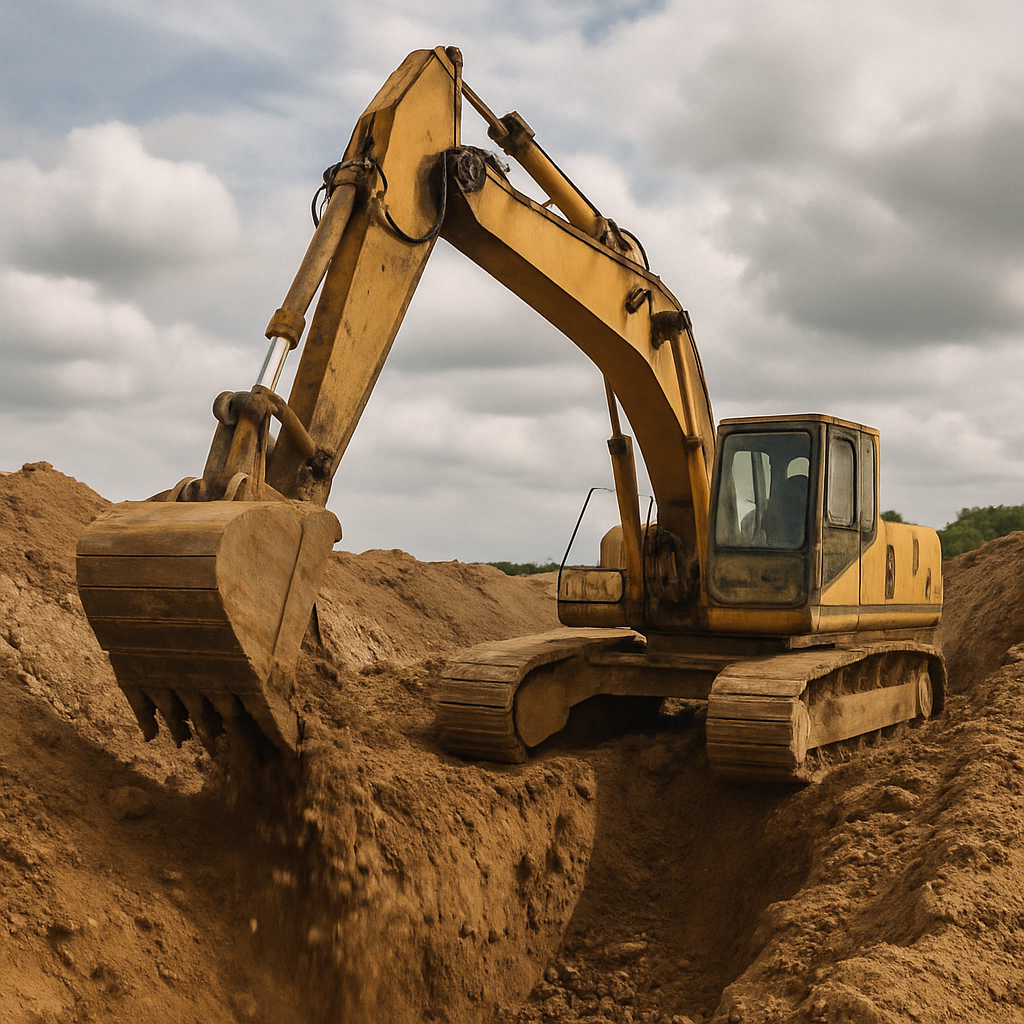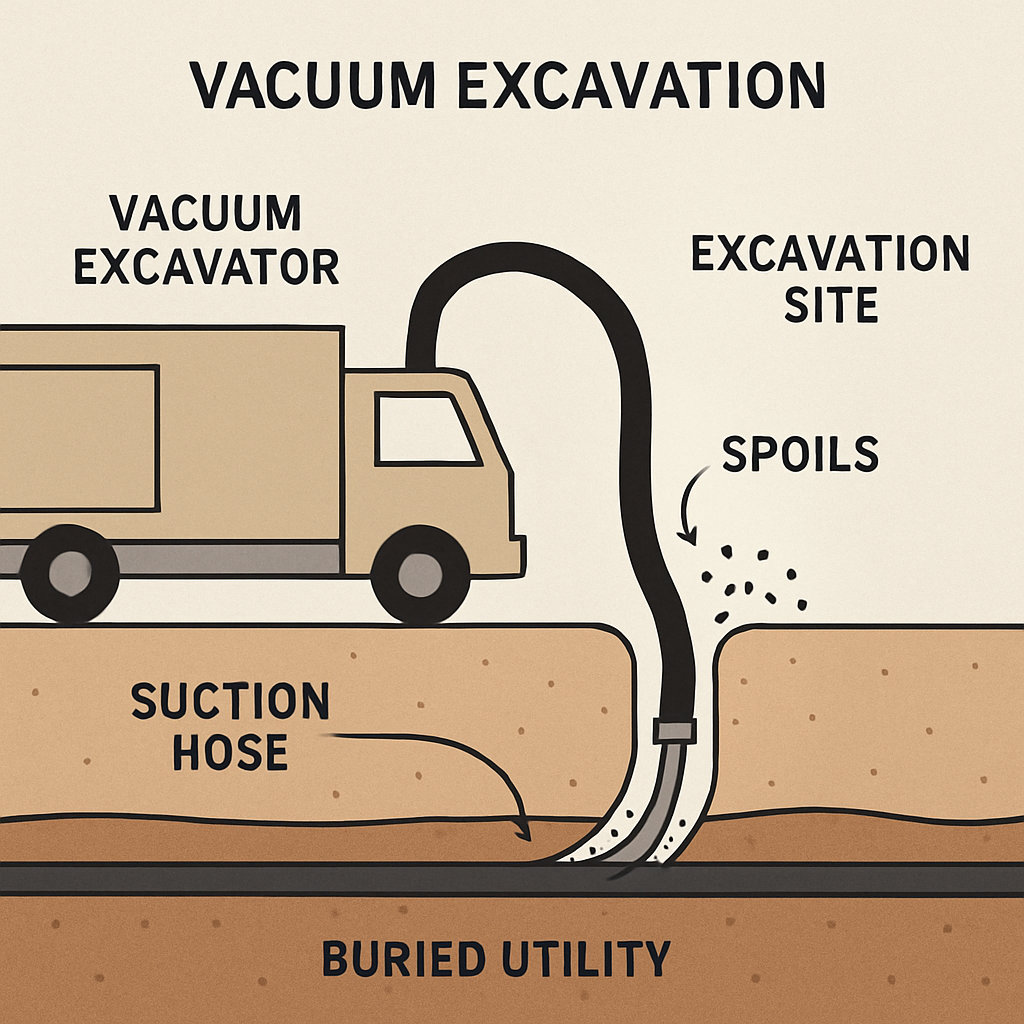Vacuum excavation is transforming the way we approach digging projects. It offers a safer, more precise alternative to traditional methods.
Traditional excavation often involves heavy machinery and risks damaging underground utilities. This can lead to costly repairs and delays.
In contrast, vacuum excavation uses air or water to expose utilities without harm. This non-destructive method is gaining popularity in urban areas.
Hydro excavation, a type of vacuum excavation, is especially effective in tight spaces. It minimizes soil disturbance and reduces waste.
This article will compare vacuum excavation with traditional methods. We’ll explore the benefits, drawbacks, and applications of each.
What Is Vacuum Excavation?
Vacuum excavation is a modern technique using air or water to safely uncover underground utilities. It minimizes the risk of damaging delicate infrastructure.
Unlike traditional methods, vacuum excavation is non-destructive. It ensures that buried pipes, cables, and lines remain intact during excavation.
This method comes in two main types: air and hydro excavation. Each uses different mediums to break up and remove soil efficiently.
- Air Excavation: Utilizes high-pressure air to dislodge soil.
- Hydro Excavation: Uses water jets to break up soil, then vacuums it away.
This technique is especially useful in urban settings. Its precision makes it perfect for projects where accuracy is essential.
Overview of Traditional Excavation Methods
Traditional excavation involves heavy machinery and manual labor to dig and move soil. Common machines include backhoes, bulldozers, and excavators.

These methods have been used for decades in construction. They are known for their capacity to move large volumes of earth quickly.
However, traditional techniques can be invasive. They often risk damaging underground utilities during the excavation process.
- Backhoes: Effective for large earth-moving tasks.
- Bulldozers: Used for pushing and leveling earth.
- Excavators: Versatile for various digging tasks.
Such methods require substantial post-excavation site restoration. The heavy machinery involved can disrupt both soil and environment significantly.
How Vacuum Excavation Works: Air vs. Hydro Excavation
Vacuum excavation uses air or water to dislodge and remove soil. It’s a safe method for exposing underground utilities without damaging them.
Air Excavation: This involves using high-pressure air to loosen soil. A vacuum then removes the displaced soil effectively.
Hydro Excavation: This method uses pressurized water to break up the ground. The resulting slurry is then vacuumed away.
These processes allow for precise and clean operations. They minimize the risk of unintentional damage to existing infrastructure.
- Air Excavation: Gentle on sensitive soils.
- Hydro Excavation: Effective in hard or dense soils.
- Versatile: Suited for urban and rural areas.
The choice between air and hydro depends on soil type and project needs. Both ensure minimal environmental disturbance.
Key Benefits of Vacuum Excavation
Vacuum excavation offers several distinct advantages. It’s renowned for its precision, making it ideal for projects near existing utilities.
This technique significantly reduces the risk of accidental utility strikes. This minimizes repair costs and project delays.
Another benefit is its non-destructive nature. It disturbs less soil, ensuring environmental preservation and reducing cleanup needs.
Projects using vacuum excavation often see shorter timelines. This efficiency can result in cost savings, especially on large projects.
Additionally, this method enhances safety on site. It minimizes the need for heavy machinery and reduces manual labor.
- Precision: Ideal for delicate operations.
- Safety: Fewer accidents and injuries.
- Environmentally Friendly: Less waste produced.
- Cost-Effective: Faster project completion.
- Versatile: Suitable for many applications.
Overall, vacuum excavation proves advantageous for modern construction needs.
- Cost: High initial equipment investment.
- Scale Limitations: Less effective for large projects.
- Expertise: Requires skilled operators.
- Safety: Reduces manual labor risks.
- Environmental Impact: Less soil disturbance.
Cost and Efficiency: Vacuum vs. Traditional Excavation Services
Cost is often a crucial consideration in choosing an excavation method. Vacuum excavation equipment can be initially pricey. However, the long-term savings from reduced labor and faster completion times can justify the investment.
Efficiency also tilts in favor of vacuum excavation. It allows for greater precision, reducing delays from utility strikes. Projects can be completed quicker, minimizing idle time and overall project costs.
In contrast, traditional methods might incur higher costs due to their labor-intensive nature. They often require more manpower and longer durations, impacting the project’s bottom line.
- Initial Cost: Higher with vacuum excavation.
- Long-term Savings: Greater with vacuum excavation.
- Efficiency: Faster completion with vacuum methods.
When to Choose Vacuum Excavation Over Traditional Methods
Vacuum excavation is ideal for complex sites with dense utility networks. It’s preferred in urban areas where precision is crucial. This method reduces risks associated with traditional digging.
Choosing vacuum excavation is also wise in environmentally sensitive zones. It minimizes soil disturbance, making it a responsible choice.
- Urban Sites: Precision is crucial.
- Dense Utility Areas: Avoids damage.
- Environmental Concerns: Reduces soil impact.
Conclusion: The Future of Excavation Services
Vacuum excavation stands as a pivotal advancement in excavation services. Its benefits in safety, precision, and environmental care are undeniable. As industries grow more aware of these advantages, the use of this method will likely expand.
Traditional methods still hold value for certain large-scale projects. However, for urban and sensitive sites, the shift towards vacuum techniques is evident. With ongoing innovation, vacuum excavation promises a safer and more efficient future for excavation services.
